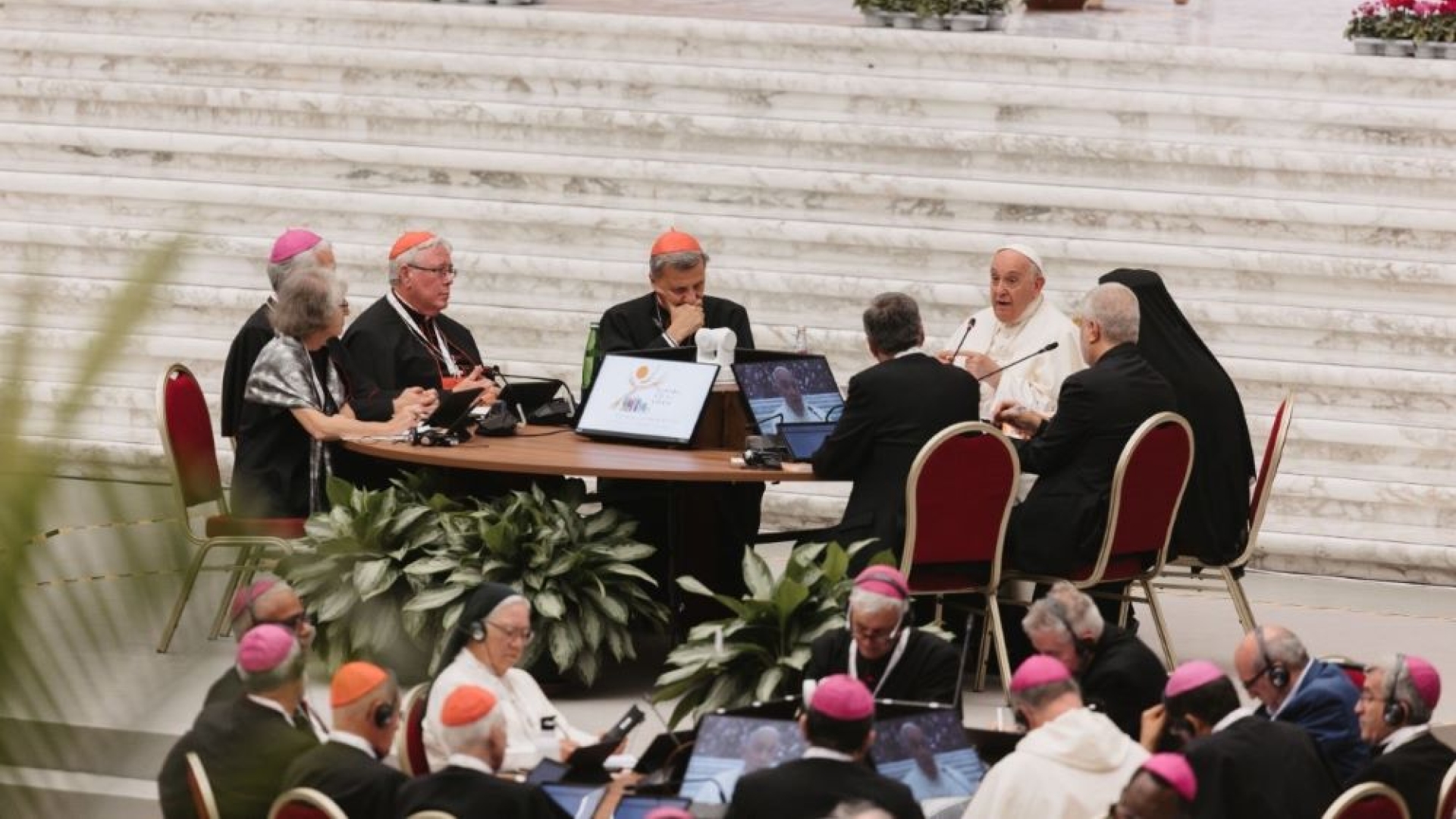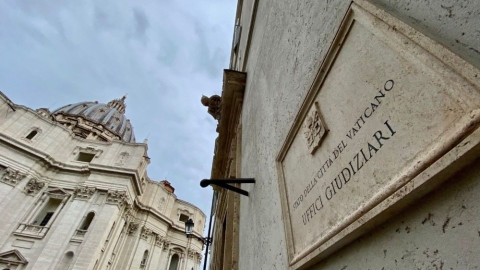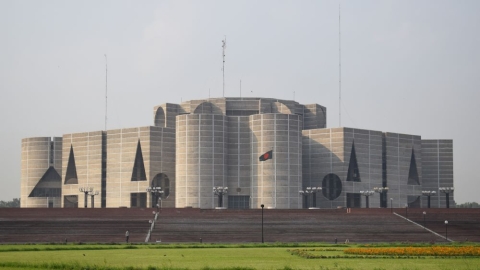Assessment of the First Session of the Synod on Synodality (2)

This second article focuses on the Synthesis Report of the first session of the 16th Ordinary General Assembly of the Synod of Bishops: “A Synodal Church in Mission.” The different propositions which compose this report were voted on by the members (a two-thirds majority was required), and the whole report itself was voted on (a simple majority was required).
The result of the votes was given in the document: the 270 propositions of the document were all approved by more than two thirds of the 365 voters, composed of bishops, priests, and laity—men and women. Some propositions were opposed by several dozen votes of “no.” The female diaconate saw the greatest opposition: 69 against; the abandonment of priestly celibacy: 55 opposed.
We should remember that this text is only “transitory.” It will be the Instrumentum laboris (working document) for the October 2024 session. And even next year’s final text will only be consultative. Only the Pope’s Apostolic Exhortation will be normative. But this text gives us an idea of the synodal process and the advancements of a movement which aims to “dust off” the Church and, eventually, to transform it.
A Systematic Restructuring
Although the commentaries during the Synod had repeated that it was not about discussing dogma but pastoral concerns, the results have just contradicted them. There are many questions about modifying “the structures.” For example, the need for “addressing the structural conditions that abetted such abuse” is asserted (I, 1, e).
Another section says: “Our synodal path shows the need for relational renewal and structural changes. In this way we can better welcome the participation and contribution of all” (II, 9, g).
The Distribution of Hierarchical Power
A clear idea of the theology which underlies it all can be found in noting that the Assembly wanted to divide the power of the Church, entrusted by Jesus Christ to the hierarchy that He instituted, between all the members of the Church. This power is threefold: magisterial, for teaching revealed truth; jurisdictional, for imposing laws which guide the faithful toward sanctity; and the power bestowed by Holy Orders, for sanctifying the members of the Church by the sacraments.
This threefold power is contested and partially turned over to all the members of the Church, in an attempt that we could call a sacrilege, since it attacks the divine constitution of the Church, time and again recalled and asserted by the Popes and the councils.
The Magisterial Power
This power is attacked by emphasis on a well-known but warped notion. This distortion is found in the ideas of Pope Francis and in a text of the International Theological Commission.
This notion is that of “sensus fidei.” Theology explains that this “instinct of faith” of the faithful is a sign, a testimony to the teaching of the Church by its hierarchy. In itself it does not have other authority. It can, on occasion, allow one or some of the faithful to realize that a pastor—a parish priest or even a bishop—is in error.
But, inherently dependent on teaching, it could not be considered a “source” –no more than the “consensus fidelium” (I, 3, c) could constitute “a sure criterion for determining whether a particular doctrine or practice belongs to the Apostolic faith.” By this biased conception of a Catholic notion, the document aims to divide the magisterial power throughout the entire body of the Church.
The Power of Jurisdiction
In order to divide jurisdiction amongst all the members of the People of God, the Assembly made use of a word that is very recent, since it only appeared in the early 20th century, in a very fragmented usage. Its frequency increased somewhat in the early 1960s and skyrocketed in May 1968. It peaked in the early 1980s, then its usage noticeably diminished.
It is thus to “co-responsibility,” the outcome of mid-1968 and already more or less obsolete, that the Synod is going to entrust the destruction of jurisdictional power in the Church. This is logical: the revolutionaries who made the Vatican II council are always slow to catch up with the modernity after which they run. The word gives away the minds which proposed it.
This word has the same function in the Church as for those who want to bring about a revolution in society: more authority, or rather, authority shared by all. That’s the reason for the fierce and repeated criticism of clericalism, the synthesis of all the evil which happens in the Church—particularly of abuse (cf. II, 9, f and II, 11, c).
The exercise of this co-responsibility is declared “essential for synodality and is necessary at all levels of the Church” (II, 8, b). Then it will be weakened at all levels: priestly and parish, episcopal and diocesan, and even papal. Thus, we must enter into “ordained ministry in a context of co-responsibility” (II, 11, d).
The clearest proposition is the following: “The question of the relationship between the Sacrament of Holy Orders and jurisdiction needs to be studied in greater depth. In dialogue with Lumen Gentium and more recent teachings such as the Apostolic Constitution Praedicate Evangelium, the aim of such a study would be to clarify the theological and canonical criteria underlying the principle of the shared responsibility of the bishop and to determine the scope, forms and implications of co-responsibility” (II, 12, g).
That says it all: to reexamine the relationship established by Christ between those with Holy Orders and those with jurisdiction—a relationship that theology and the magisterium have largely documented, but that the Vatican II council called into question and that the constitution Praedicate Evangelium radically transformed, against the doctrine of the Vatican II, incidentally...
To drive this home, the text asserts that “It is necessary to implement, in forms legally yet to be defined, structures and processes for regular review of the bishop's performance, with reference to the style of his authority, the economic administration of the diocese's assets, and the functioning of participatory bodies, and safeguarding against all possible kinds of abuse” (II, 12, j).
Finally, the Pope does not escape this reduction: “There is a need for more insight into how a renewed understanding of the Episcopate within a synodal Church affects the ministry of the Bishop of Rome and the role of the Roman Curia. This issue has significant implications for the way co-responsibility in Church governance is lived out” (II, 13, d).
A special mention must be made of the demands made on the subject of women. On the one hand, it says: “It is urgent to ensure that women can participate in decision-making processes and assume roles of responsibility in pastoral care and ministry” (II, 9, m), and on the other: “We propose that women receive appropriate formation to enable them to be judges in all canonical processes” (II, 9, r). Bear in mind that the capacity to judge in a canonical process depends on power of jurisdiction, which, by divine right, can only be conferred on clerics.
The Power of Holy Orders
Holy Orders are attacked in a number of ways: that lectors be able to preach; that women be able to become deacons; that new ministries be instituted (for example, for married couples); and by the elevation of the position of permanent deacon in order to show that it is not “only” a step toward priesthood.
And finally, radically, the text attacks Holy Orders by its emphasis of baptism as “the root of the principle of synodality” (I, 7, b). It is thus that “all the baptised are co-responsible for mission, each according to his or her vocation, competence and experience. Therefore, all contribute to imagining and discerning steps to reform Christian communities and the Church as a whole” (III, 18, a). It specifies that even non-Catholics are part of this (I, 7, b).
Such a complete dismantling of the power of the Church produces a “reformation”—like that of the Protestants—which leaves effectually nothing of the Church of Jesus Christ.
(Fonti: Synod.va/Vatican news – FSSPX.Actualités)
Immagine: © Synod.va





